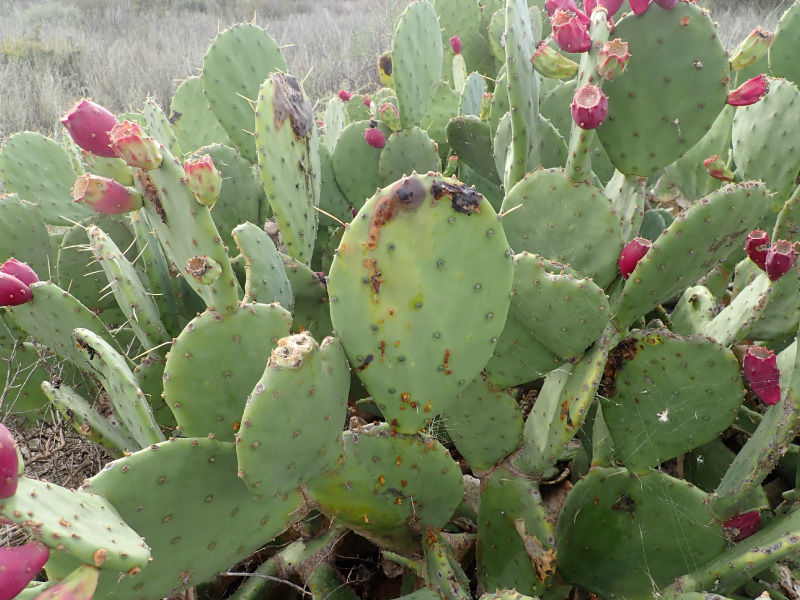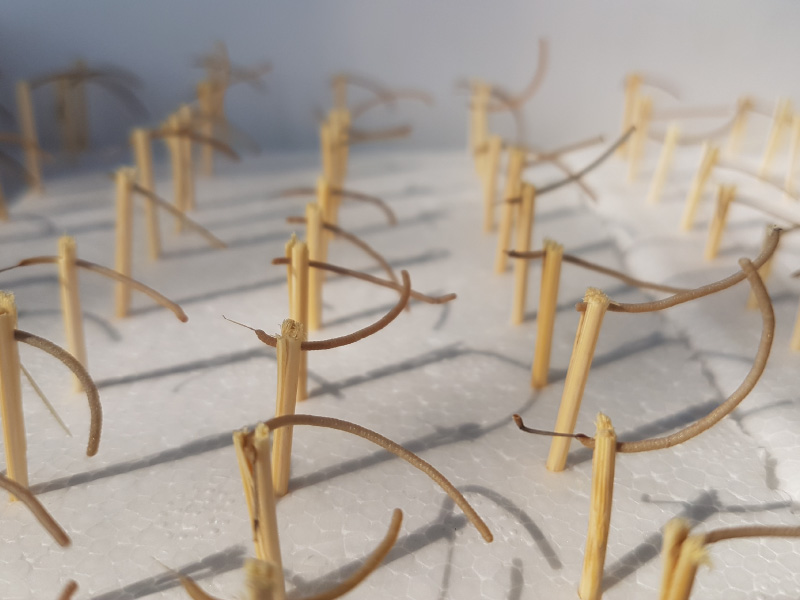20 May Cactoblastis cactorum (Cactus moth)
Cactoblastis cactorum (Cactus moth)
Cactoblastis cactorum, the cactus moth, is native to South America and feeds on plants of the genus Opuntia. The larvae eat internal tissues gregariously, favoring secondary infections, exposing the plant to death. This pest threatens the unique diversity of cacti and the prickly pear industry, both in North America and Argentina.
The cactus moth was successfully used for the biological control of Opuntia spp. in Australia and South Africa, where no native cacti occur. It accidentally reached the United States, dispersing quickly, placing Mexico at risk. Mexico possesses one of the greatest diversities of native cacti, and a large prickly pear based industry. This crop is widely used in arid areas as it has the advantage of not needing irrigation and has multiple uses (human food, fodder for livestock, soil stability, fence, wind protection). In Argentina, the cactus moth is the main pest of prickly pear plantations, causing heavy losses. Our research includes basic ecology studies of this pest, interaction with its host plants, and the damage it causes. We conduct searches for natural enemies; currently, we are mainly studying Apanteles opuntiarum, a specific parasitoid wasp, with great potential as a control agent. Genetic studies are being conducted to determine the dispersal pathways and population structuring of C. cactorum and its related species.
Staff:
Investigadora a cargo: Laura Varone
Personal técnico: Mariel Guala
Estudiantes de doctorado: Malena Fuentes Corona y Daniel Poveda Martínez
Cooperators:
Stephen Hight (USDA-ARS- CMAVE, Tallahassee, Florida, EE. UU.)
Mrittunjai Srivastava (Division of Plant Industry, Florida Department of Agriculture and Consumer Services, Gainesville, Florida).











